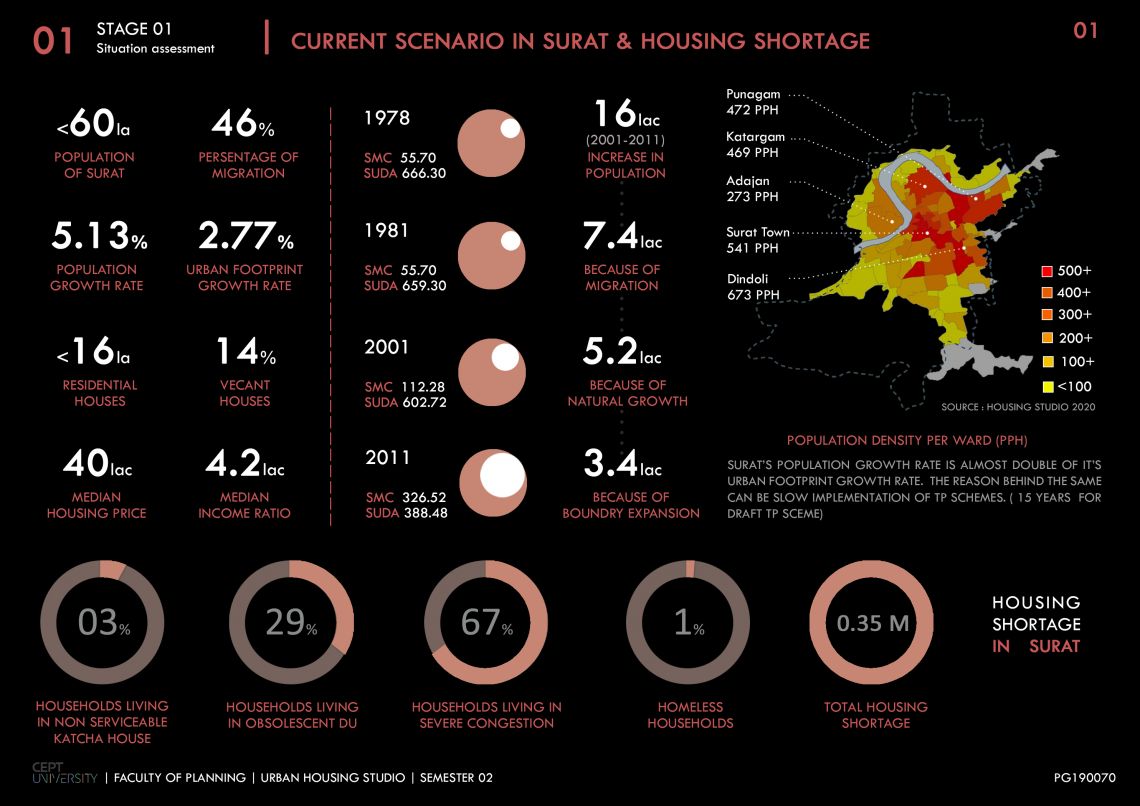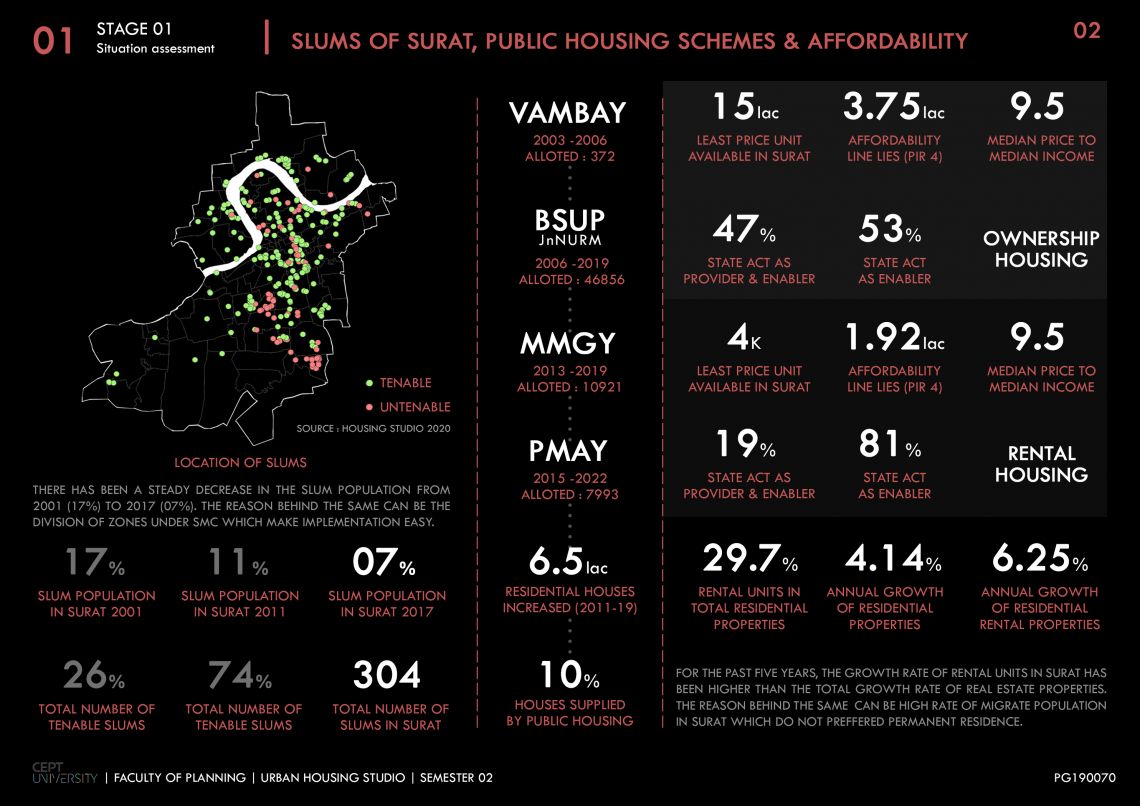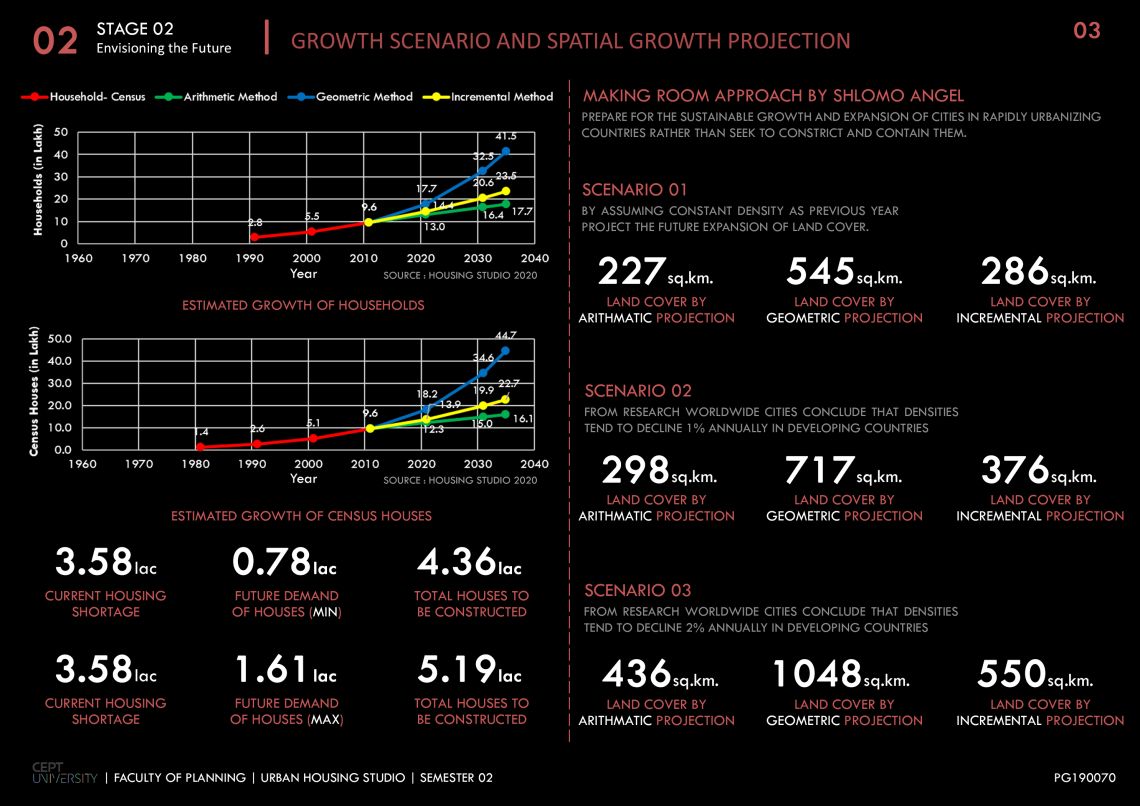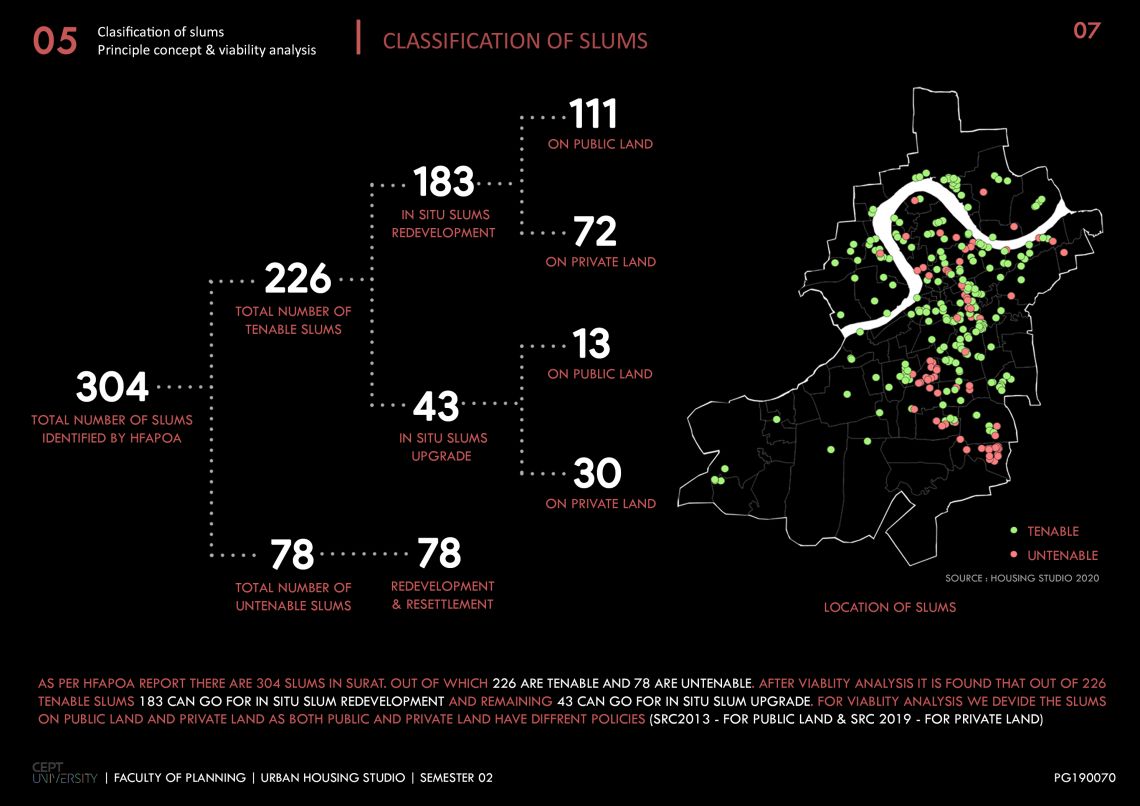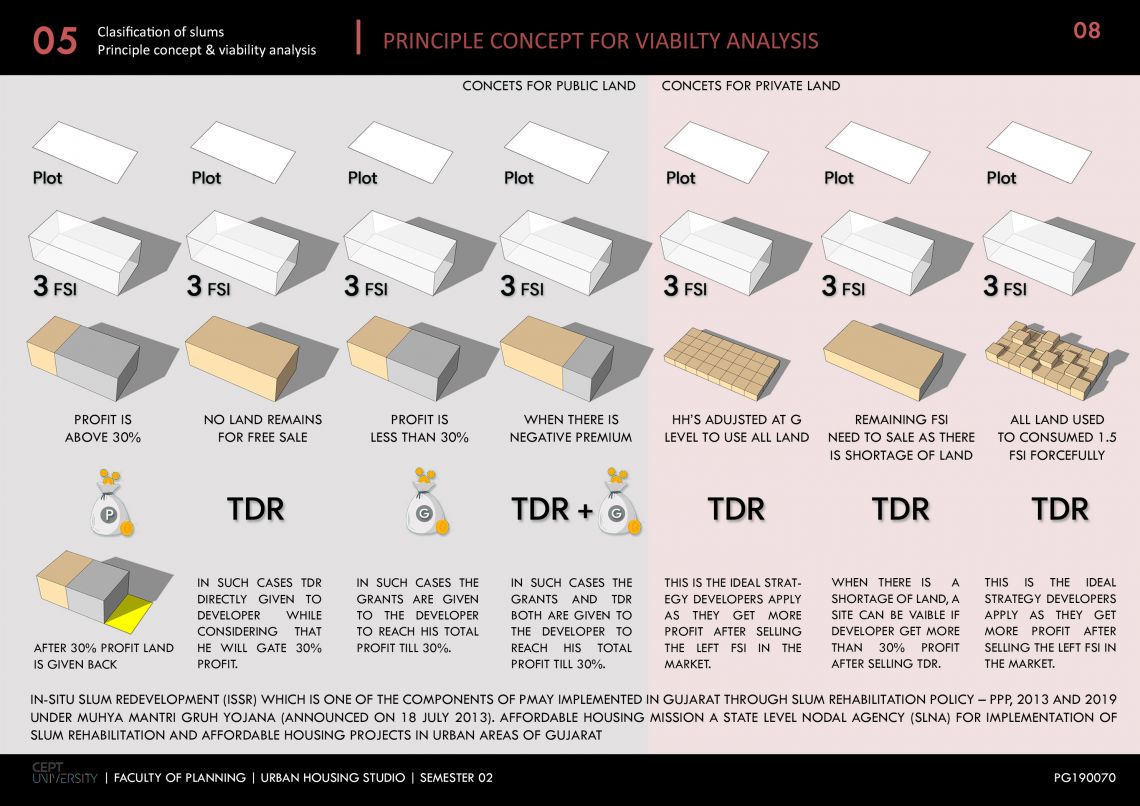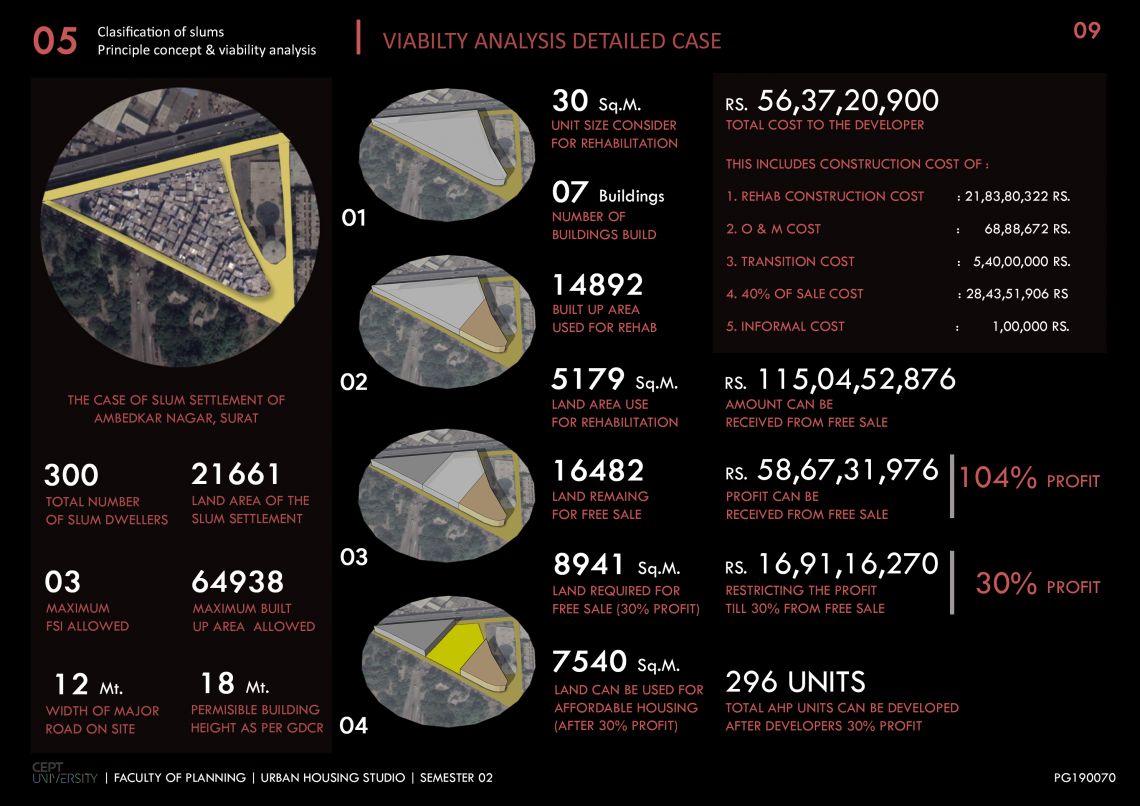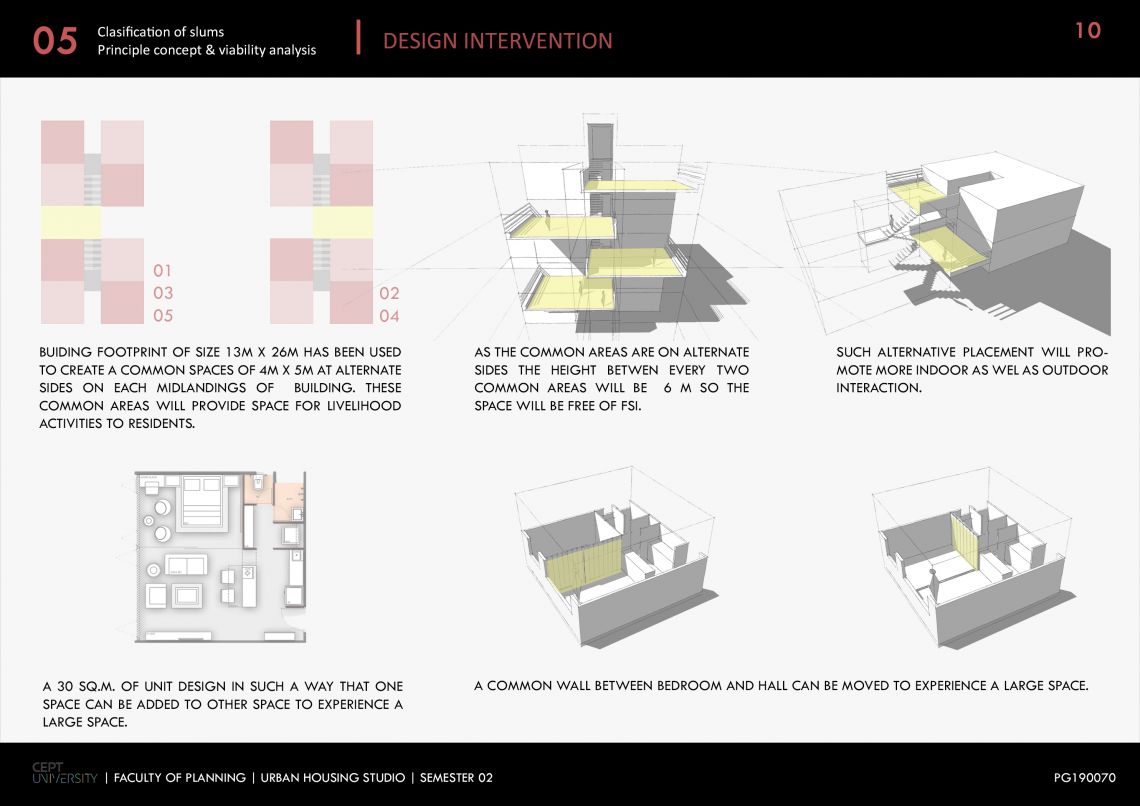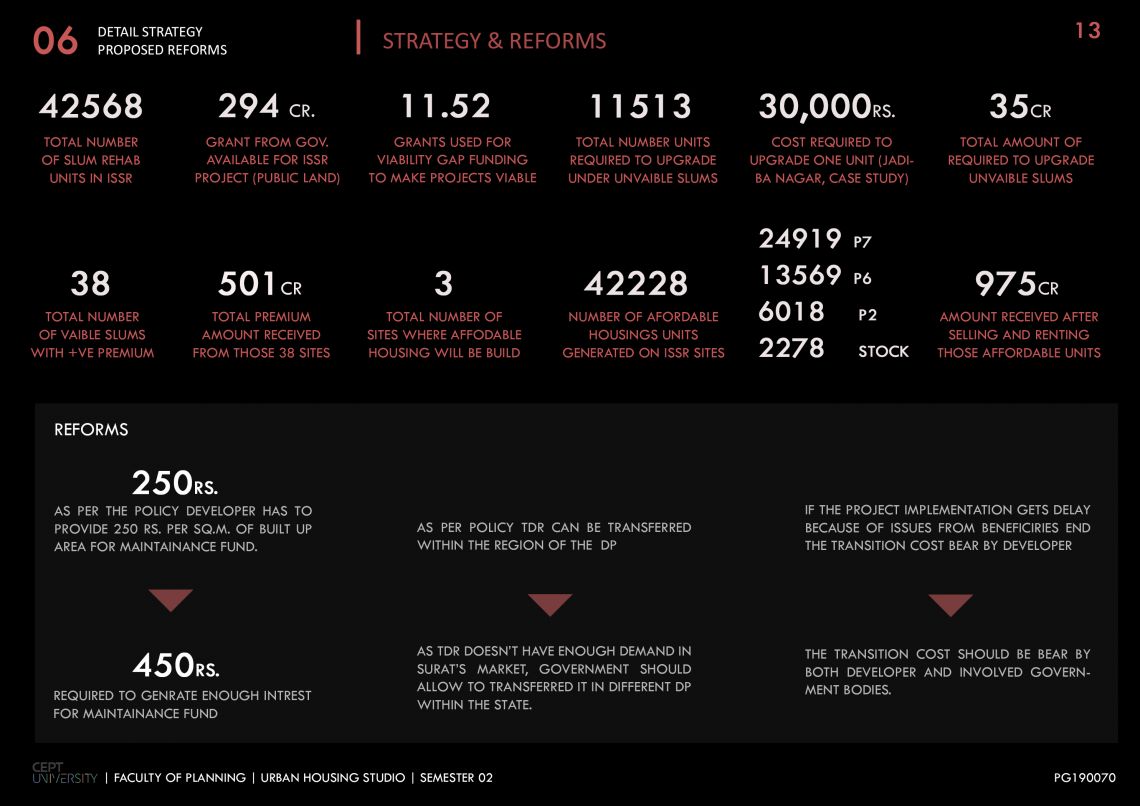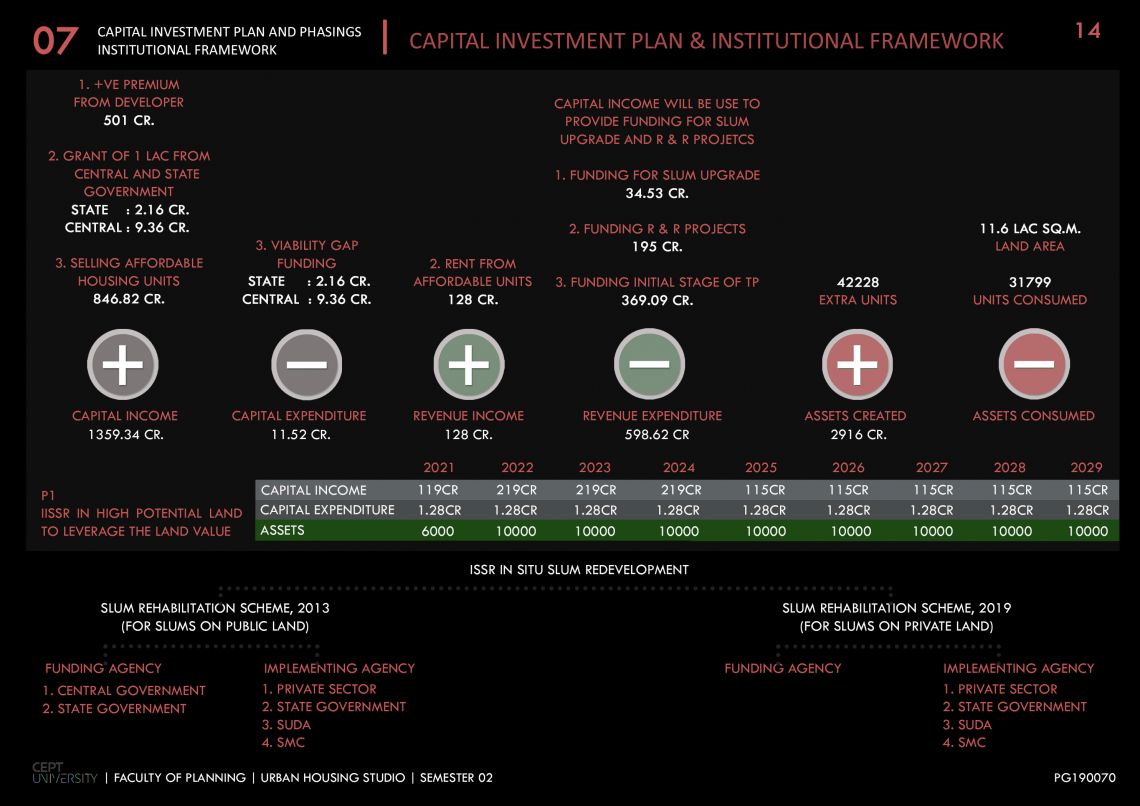IN SITU SLUM REDEVELOPMENT
- Student AJAY PRAKASH SHETYE
- Code PG190070
- Faculty Planning
- Tutor/s Sejal Patel,Amruta Patel
The studio was going to start on the 7th of January and the whole class was curious about the question that “which city we are going to study?” The day came, Sejal ma’am and Amruta ma’am break the suspense and introduced us to the Surat city. The World’s largest diamond manufacturing center recognized in the top 5 fastest growing city in the world having GDP of 11.5% with 46 % migrate population Surat talks about it’s dynamic. Understanding the housing sector of the city like this from the perspective of housing trends and relating the same with other important factors like the current market, economy, demography, and its spatial growth was challenging. The studio was divided into three phases. The 1st was a situation assessment that includes an understanding of different factors that control or affect the housing sector in Surat like spatial, demographic, economic pattern, etc. The 2nd phase of the studio was envisioning the future -2035. For the same, we followed the making room approach by Shlomo angle which is “prepare for the sustainable growth and expansion of cities in rapidly urbanizing countries rather than seek to constrict and contain the”. The 3rd phase was individual sub-strategies which will cater to different population groups throughout the housing spectrum. I was working on a sub-strategy “in situ slum redevelopment on high potential land to leverage the land value with private sector participation”. In such a strategy government tries to attract the private sectors by providing incentives and TDR. But Surat has low demand in the market for TDR.
